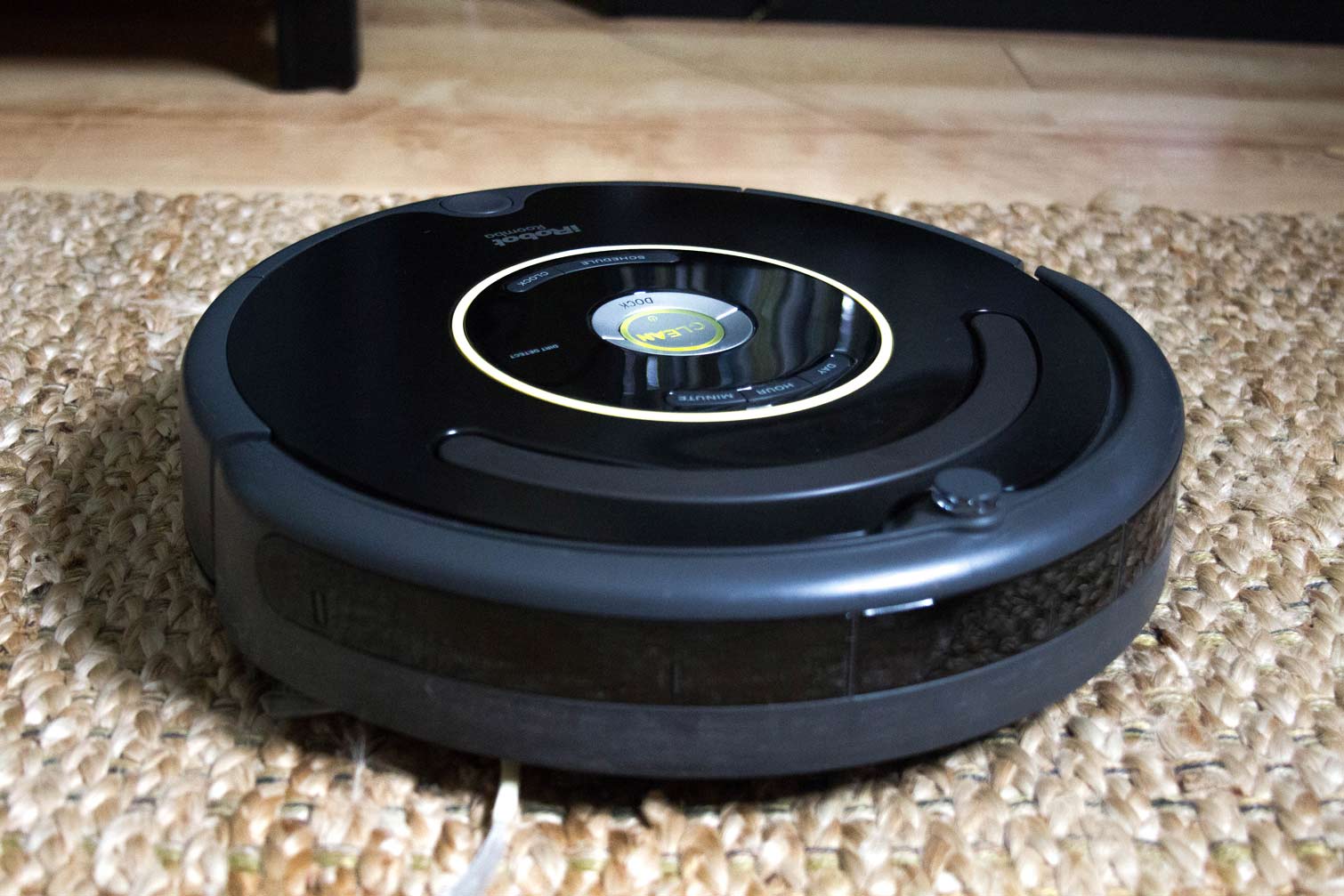Tom's Guide Verdict
You don't have to get a newfangled robot vacuum. iRobot's tried-and-true model is still a worthy worker for your home, and now it's sold at a discount.
Pros
- +
Thorough cleaner
- +
Despite lack of app, easy to schedule cleanings on the device
- +
Its bristley brushes really do a great job of cleaning carpets
Cons
- -
Not good at picking up pet hair
- -
Moves a little too aggressively when navigating around objects
Why you can trust Tom's Guide
Sometimes, when you're looking for the right robot vacuum to bring into your home, sticking with Old Faithful is the best choice. It's been five years since it came to market, but the iRobot Roomba 650 ($299) is still a very capable device if you're looking for a little help around the house.
Sure, it's not as modern-looking as some robot vacuums on the market now, nor does it offer nifty features like Wi-Fi connectivity or app capabilities. But it does come from one of the original robot-vacuum purveyors, and years later, it still offers solid performance for the price.
Design: Nothing you haven't seen before
Because iRobot was one of the first companies to make a robot vacuum, it's helped set the precedent for how they look. The Roomba 650 is designed in that tried-and-true circular style, with utilitarian black and gray trimmings and an industrial aesthetic. Hiding on top of the device is a pullout handle, which is really quite handy for walking the device up and down the stairs.
Included is a replacement filter, a cleaning tool, and a charger that can be plugged directly into the vacuum or into a drive-on charging dock. Of course, you'll need to employ the latter if you want Roomba to dock on its own.
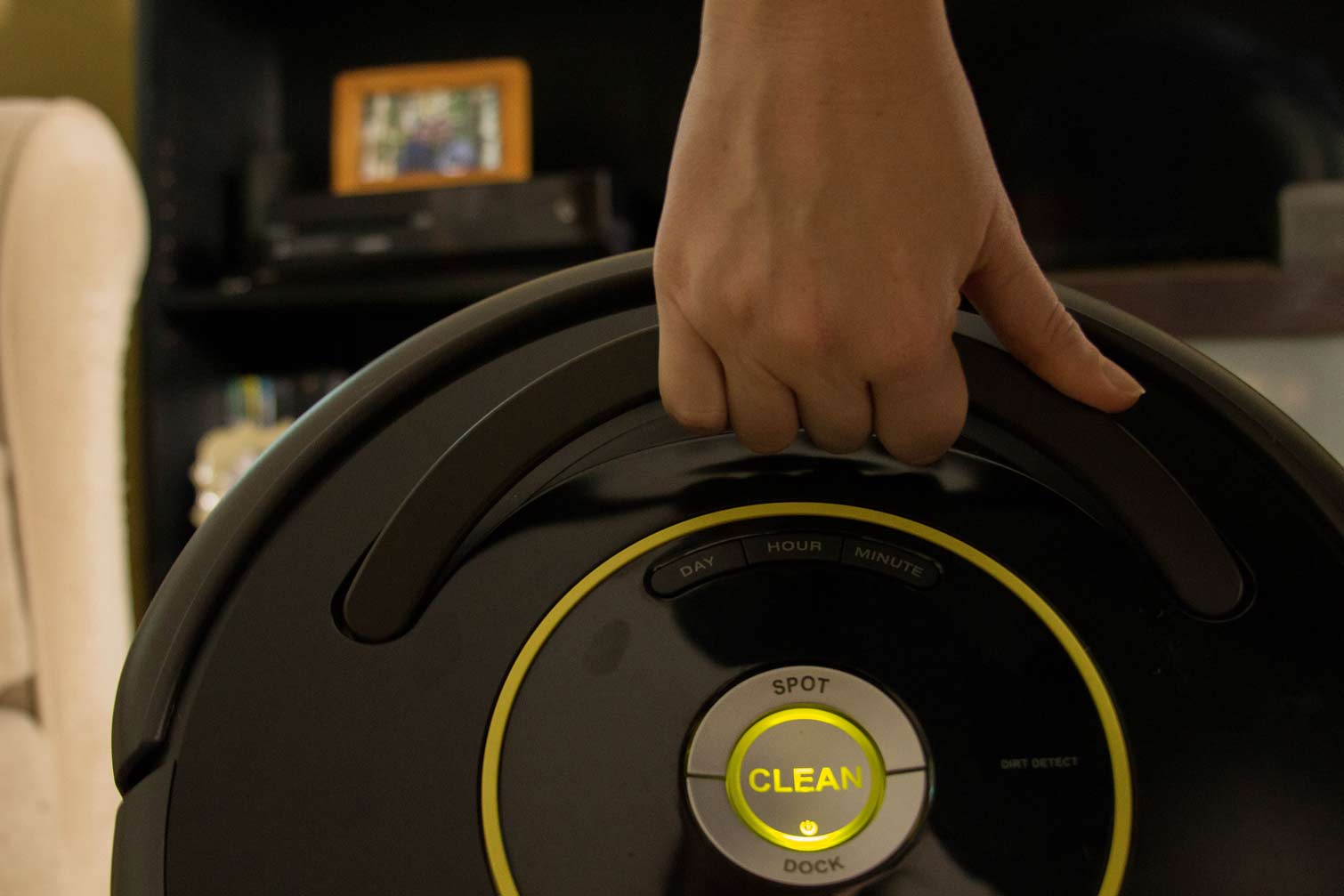
The box also includes a virtual wall accessory, which is the old way that Roomba set up virtual barriers. This particular device takes two C-cell batteries, and it projects an invisible wall of sorts that the Roomba can't pass through. You don't have to worry about using this robot with stairs, however, since a set of infrared sensors on the bottom helps the Roomba effectively "see" where there's floor for it to tread.
The Roomba 650 is designed in that tried-and-true circular style, with utilitarian black and gray trimmings and an industrial aesthetic.
The Roomba 650 is controlled primarily by pressing the center Clean button, which lights up yellow when the device is charging and green when the robot is ready to go. It's surrounded by five other buttons, including one to start up Spot Cleaning mode, which does a deep cleaning around the robot's base, and another for commanding the device to return to its dock. The Roomba will dock on its own after cleaning, however.
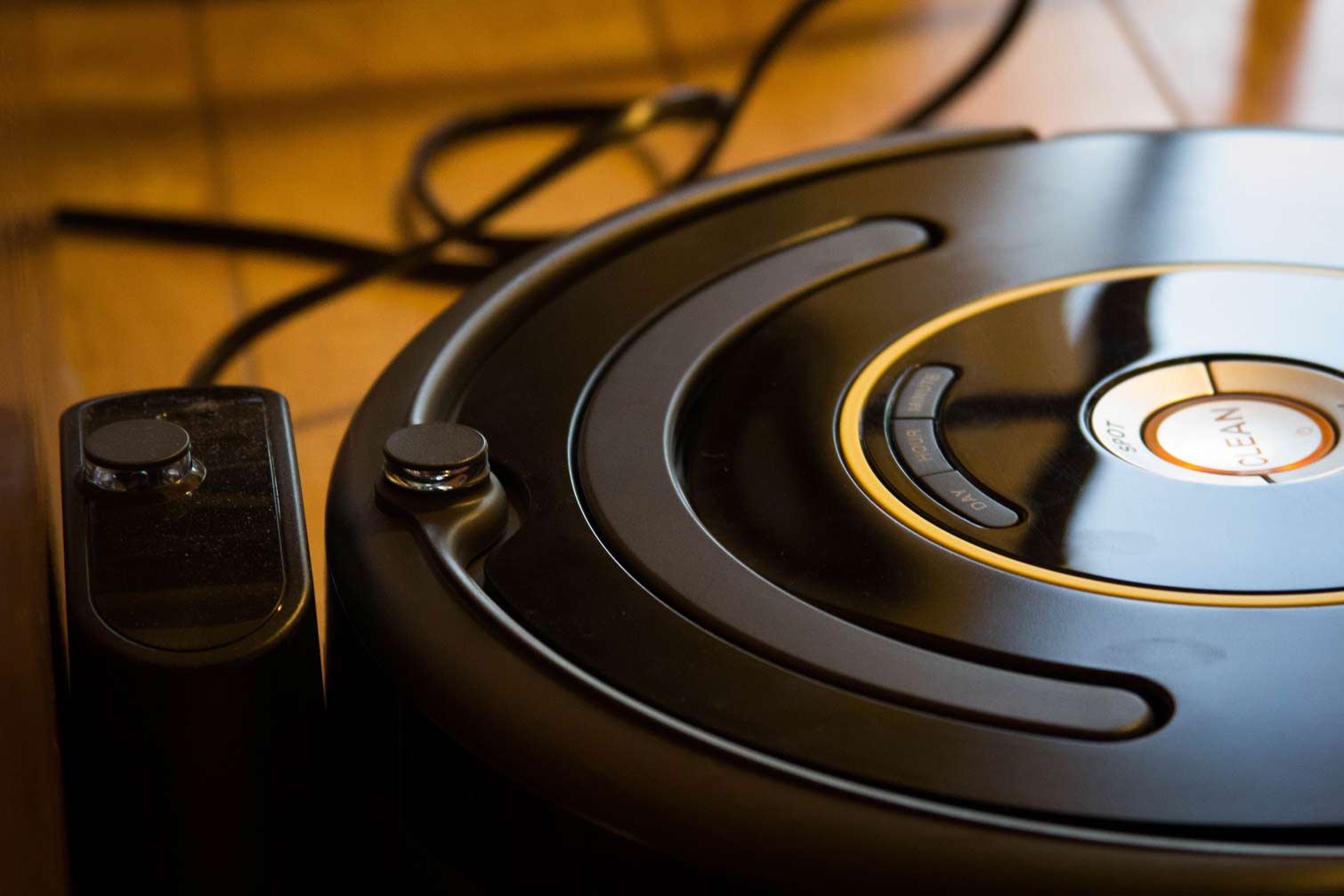
Scheduling the Roomba gave me nostalgia for old-school alarm clocks with LCD displays. You have to first set the current date and time by holding down the Clock button to change the mode of the display, and then the Date, Hour or Minute button to set the configuration. It's the same method to schedule the cleaning, except you'll have to hold down the Schedule button.
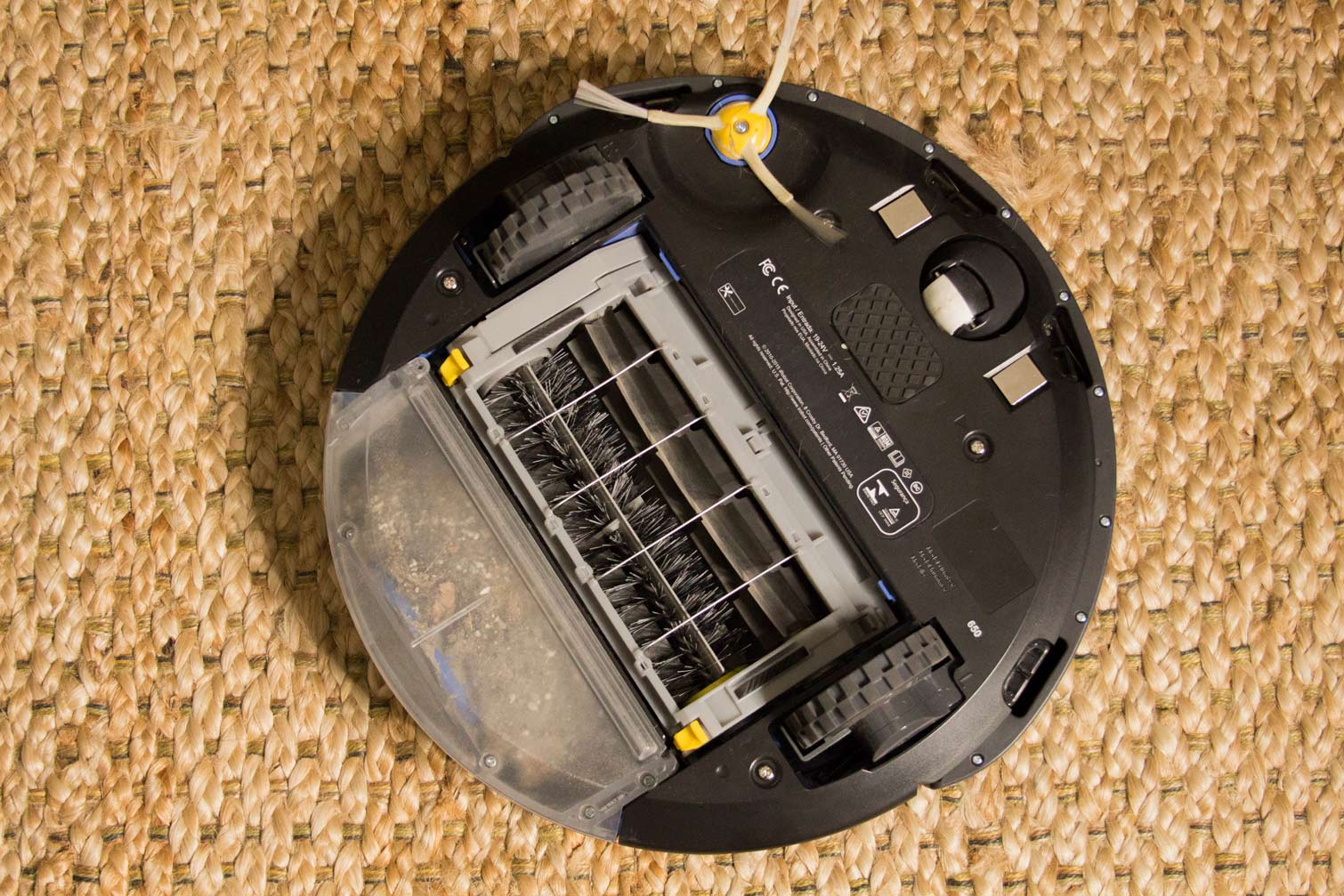
Performance: Good, but a little rough around the edges
The Roomba 650 uses a set of dual rotating brushes, edge-sweeping brushes and a filtered dust bin. Many modern robot vacuums have adopted this formula, though iRobot is still one of the best at implementing it.
The Roomba 650 moves surprisingly fast. Most robot vacuums take a steady, stately pace as they move between rooms, but the 650 seems to be on a mission. The downside is that it can slide over a pile of debris or around rugs where it might require more time to suck up everything.
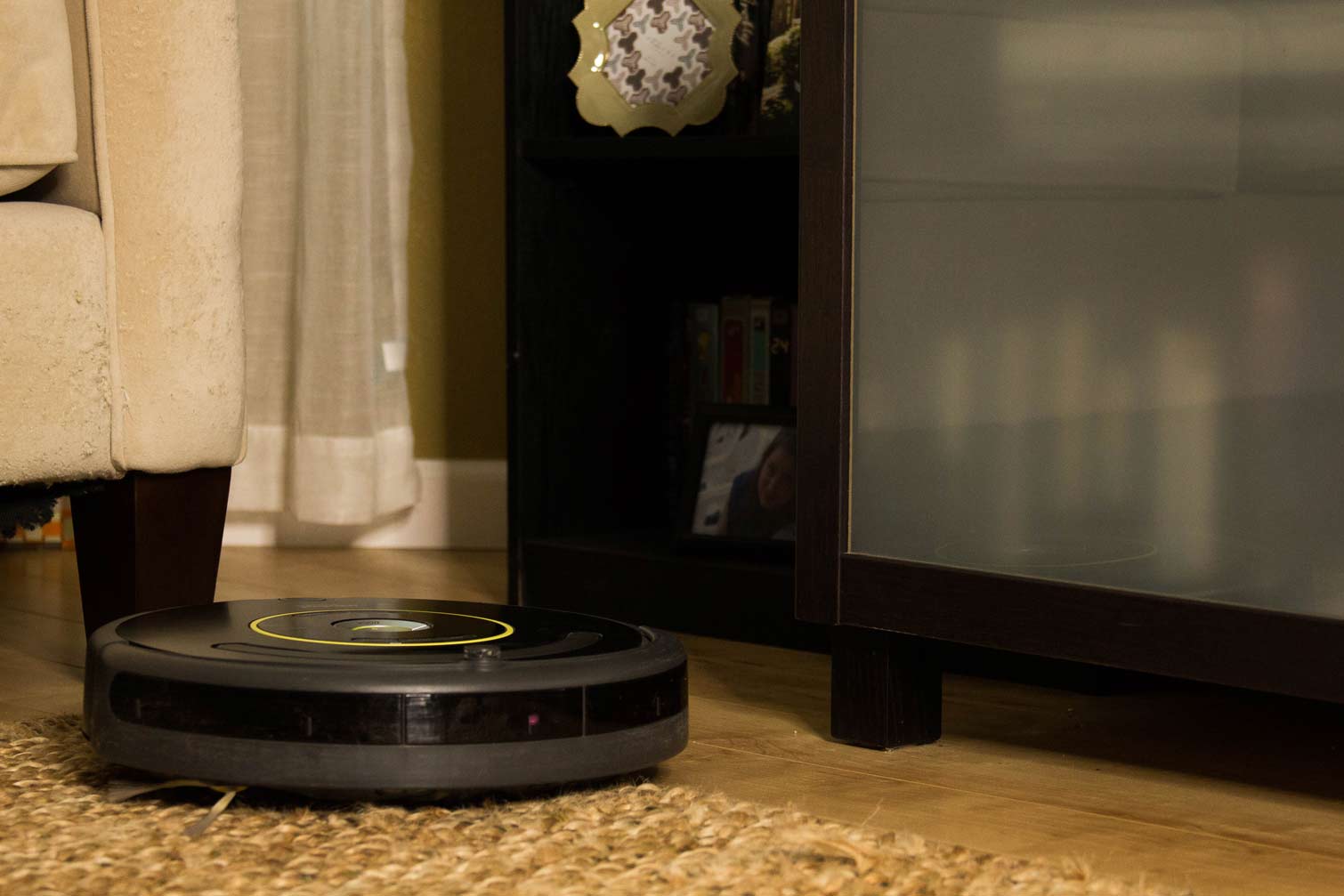
The speed becomes more of a nuisance when paired with the Roomba 650's clunky movements. Whereas the $890 Roomba 980 takes it easy around corners and table legs, the 650 has no qualms about barreling into walls or furniture to find its way around. Doing so at such speed raises the risk that the robot will damage your belongings.
MORE: The Best Robot Vacuums to Clean Your Pad
I'm just thankful it didn't break any of the glass bottles sitting on the floor of my dining area. By comparison, the similarly priced Ecovacs Deebot M82 is a little less aggressive when working its way around a room, and since that robot is half an inch shorter than the Roomba 650, there's less potential for destruction if it bumps into a piece of furniture.
The 650 has no qualms about barreling into walls or furniture to find its way around.
Compared to less expensive vacuums, like the Eufy RoboVac 11 and the Deebot M82, was equally adept at picking up flour and kitty litter, but had trouble with pet hair. On a vinyl surface, the Roomba picked up 54 percent of pet hair, compared to 40 percent for the Deebot and just 11 percent for the RoboVac 11.
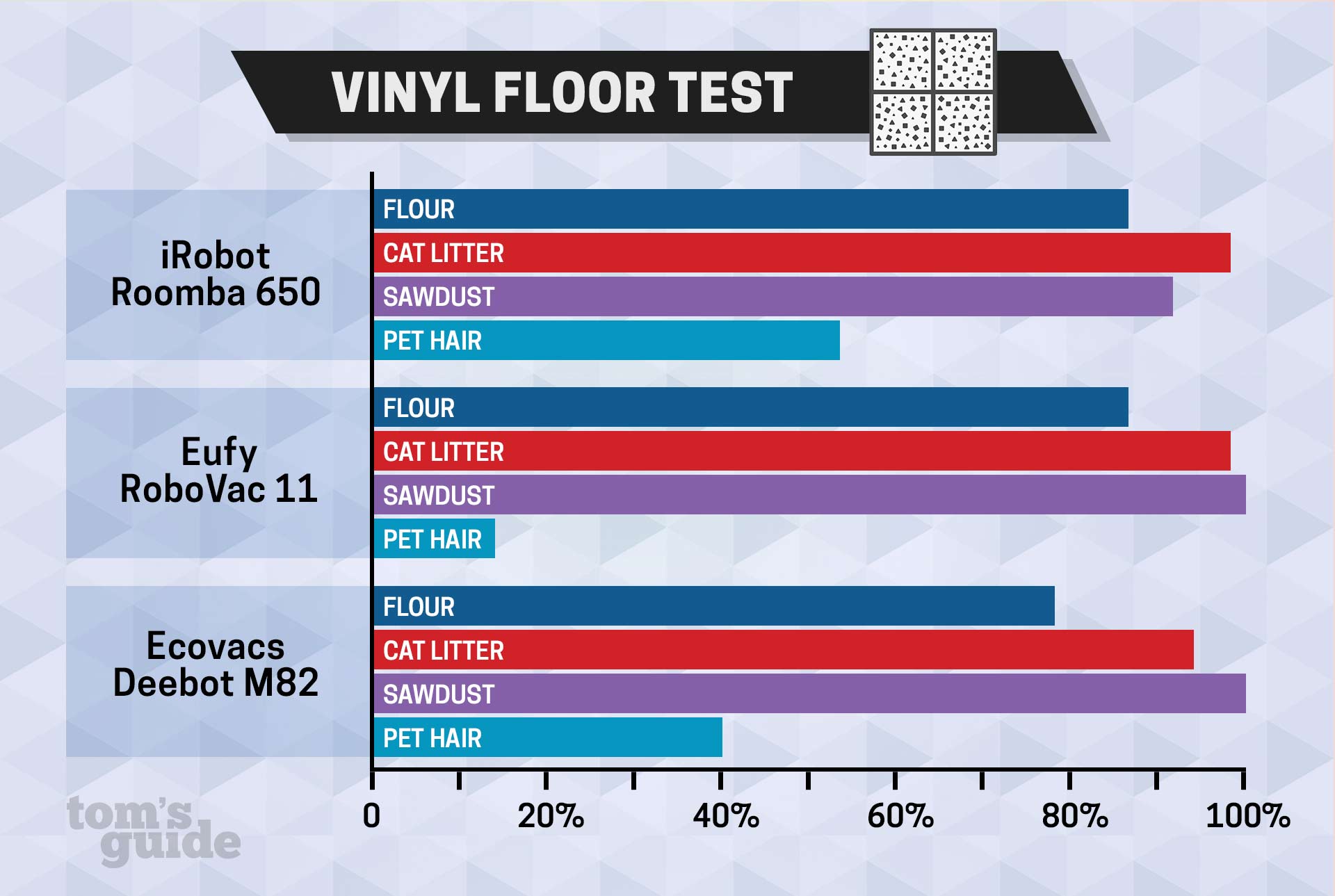
On wood, however, the RoboVac picked up 60 percent, while the Roomba got 44 percent; the Deebot failed completely on this test. On carpet, the Robovac again bested the Roomba, 44 percent to 30 percent, while the Deebot also failed this test.
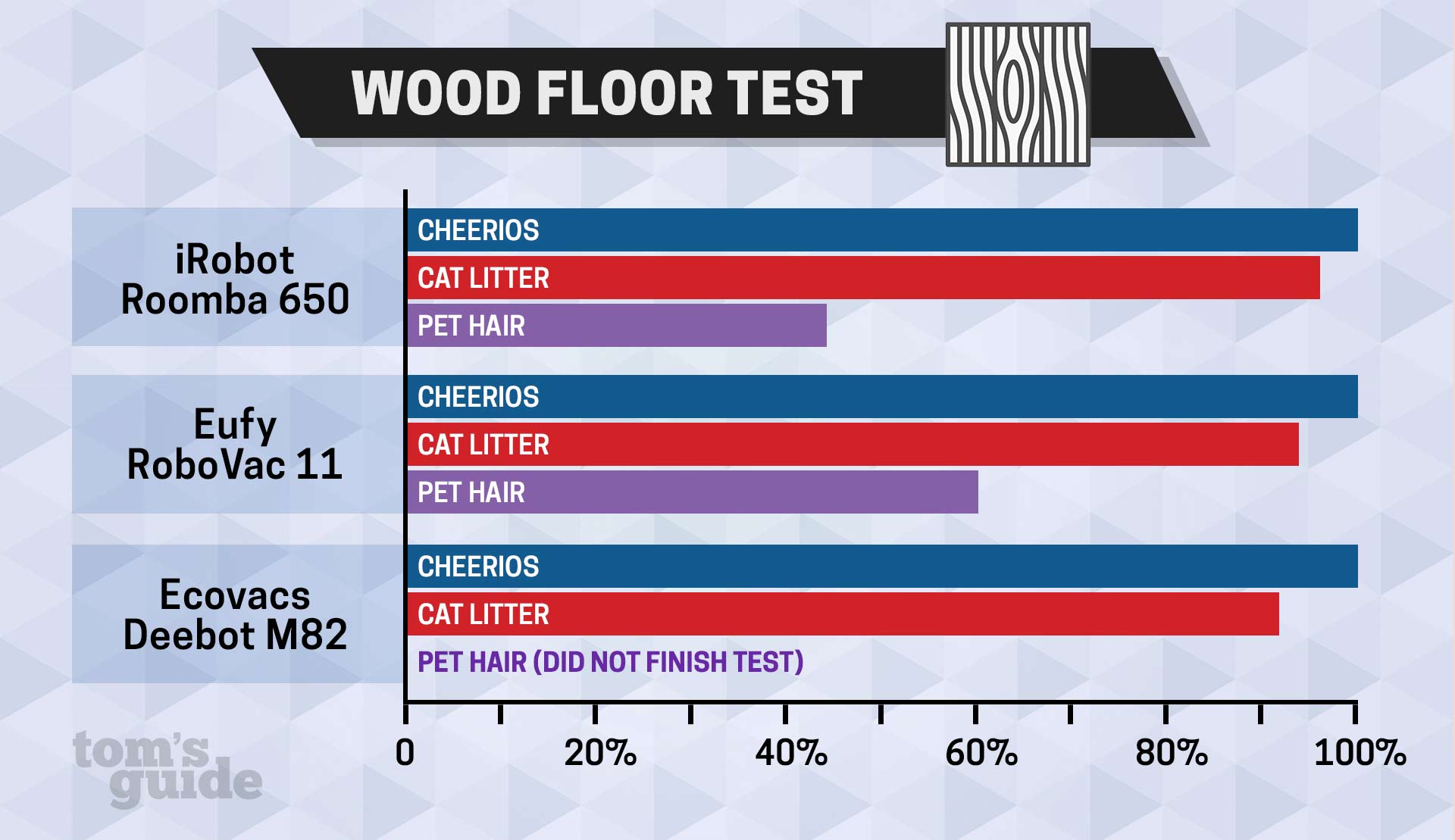
To be fair, none of these three vacuums is the best for pet-heavy households, though I expected the Roomba to fare better because of its bristled rolling brush.
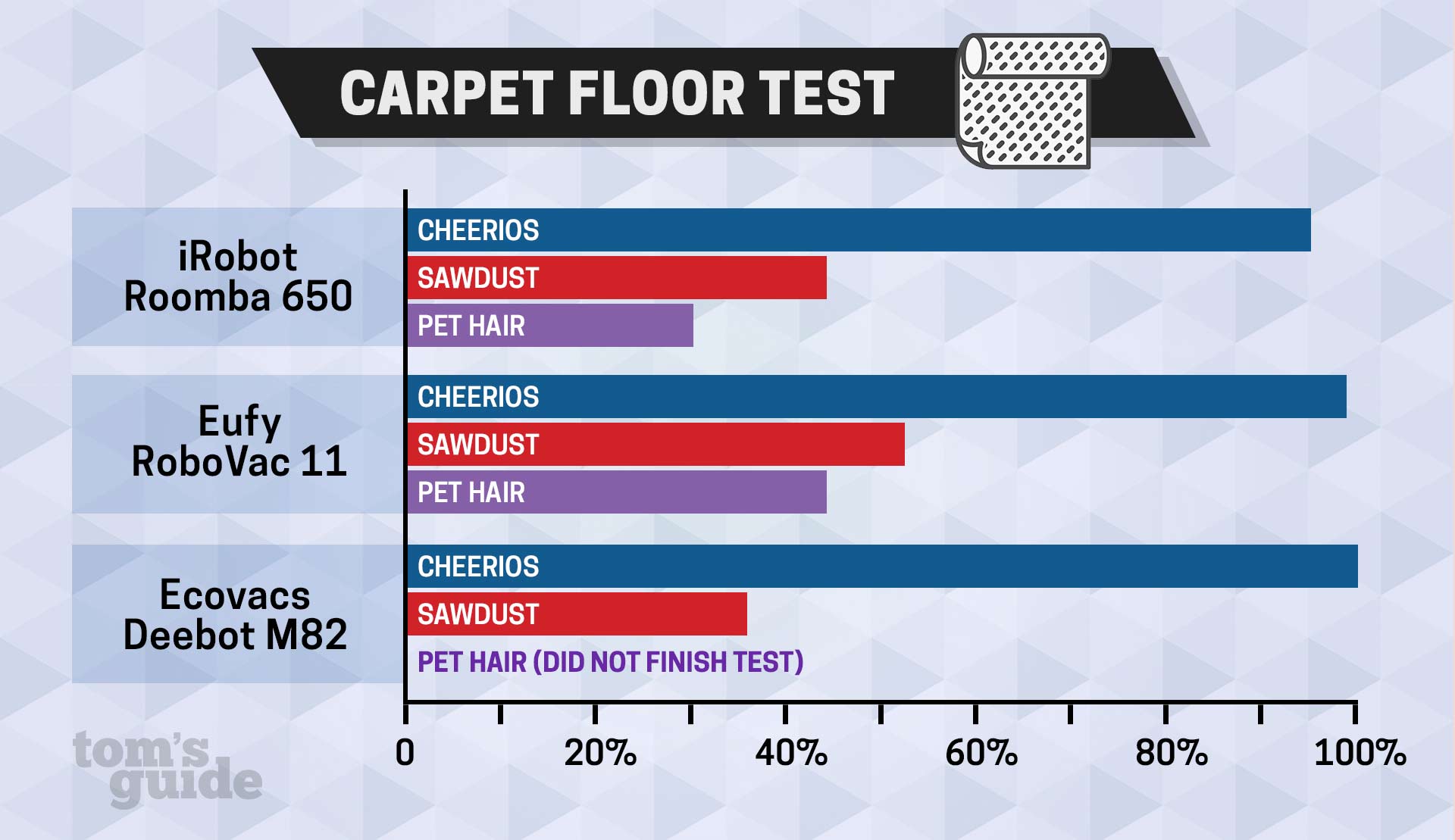
The Roomba 650's 3,000-mAh battery lasts as long as the batteries on the newer robot vacuum models, or at least it did in my house. The Roomba spent an hour cleaning my 470-square-foot home, before it determined it was finished and returned back to its base.
Bottom Line
If you're looking for a solid helper around the house, you'll be satisfied with the Roomba 650. Granted, it doesn't have Wi-Fi connectivity — the Roomba 690 ($324) has similar capabilities, but adds Wi-Fi and can be controlled using Amazon Alexa — but the 650 gets the job done.
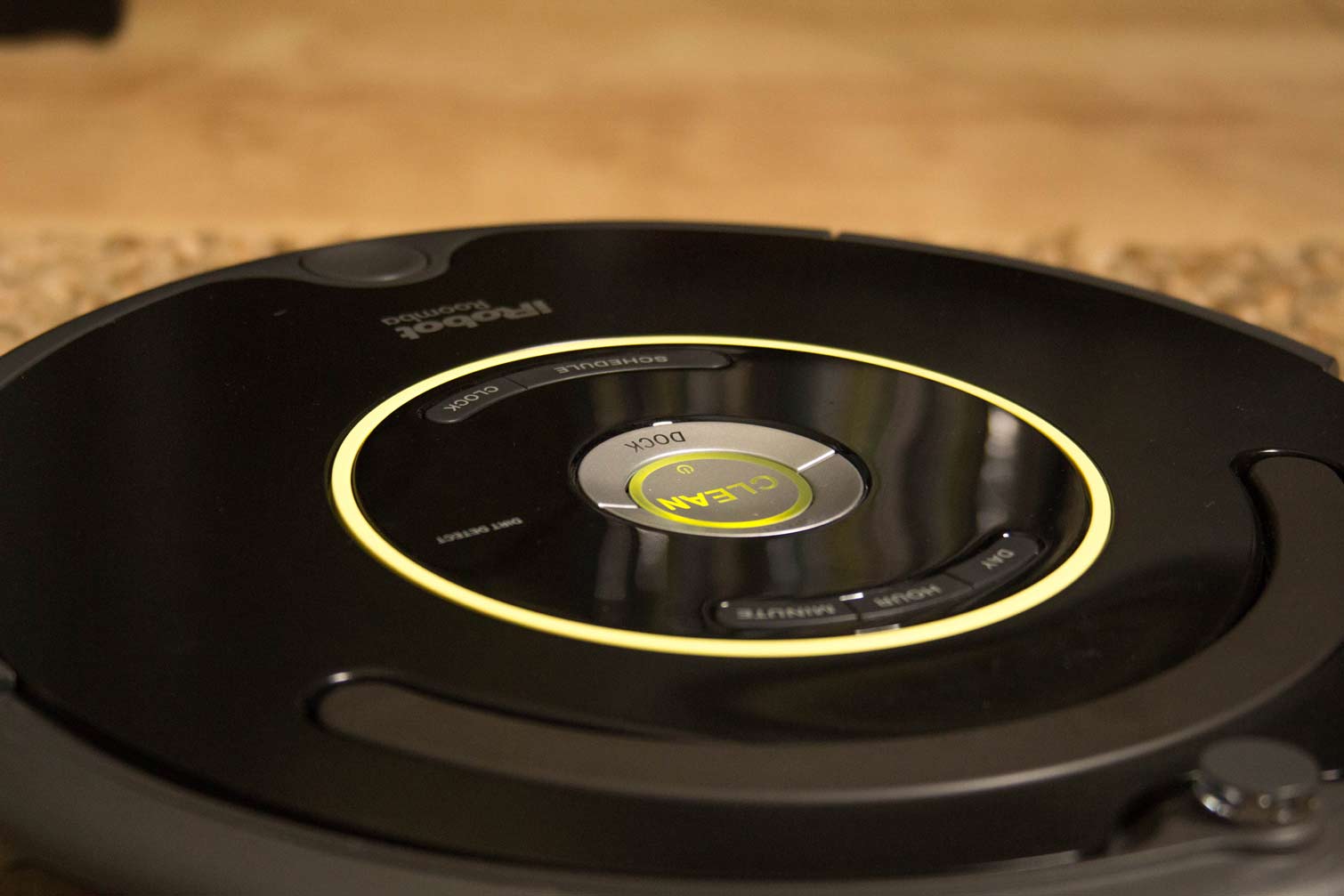
For budget vacuums, we prefer the Eufy RoboVac 11. It costs about $80 less, generally performed better on our lab tests and comes with a remote control. Still, even though the Roomba 650 has been around for a while, it is still a capable cleaner.
Credit: Florence Ion/Tom's Guide
Florence Ion has worked for Ars Technica, PC World, and Android Central, before freelancing for several tech publications, including Tom's Guide. She's currently a staff writer at Gizmodo, and you can watch her as the host of All About Android on the This Week in Tech network.
